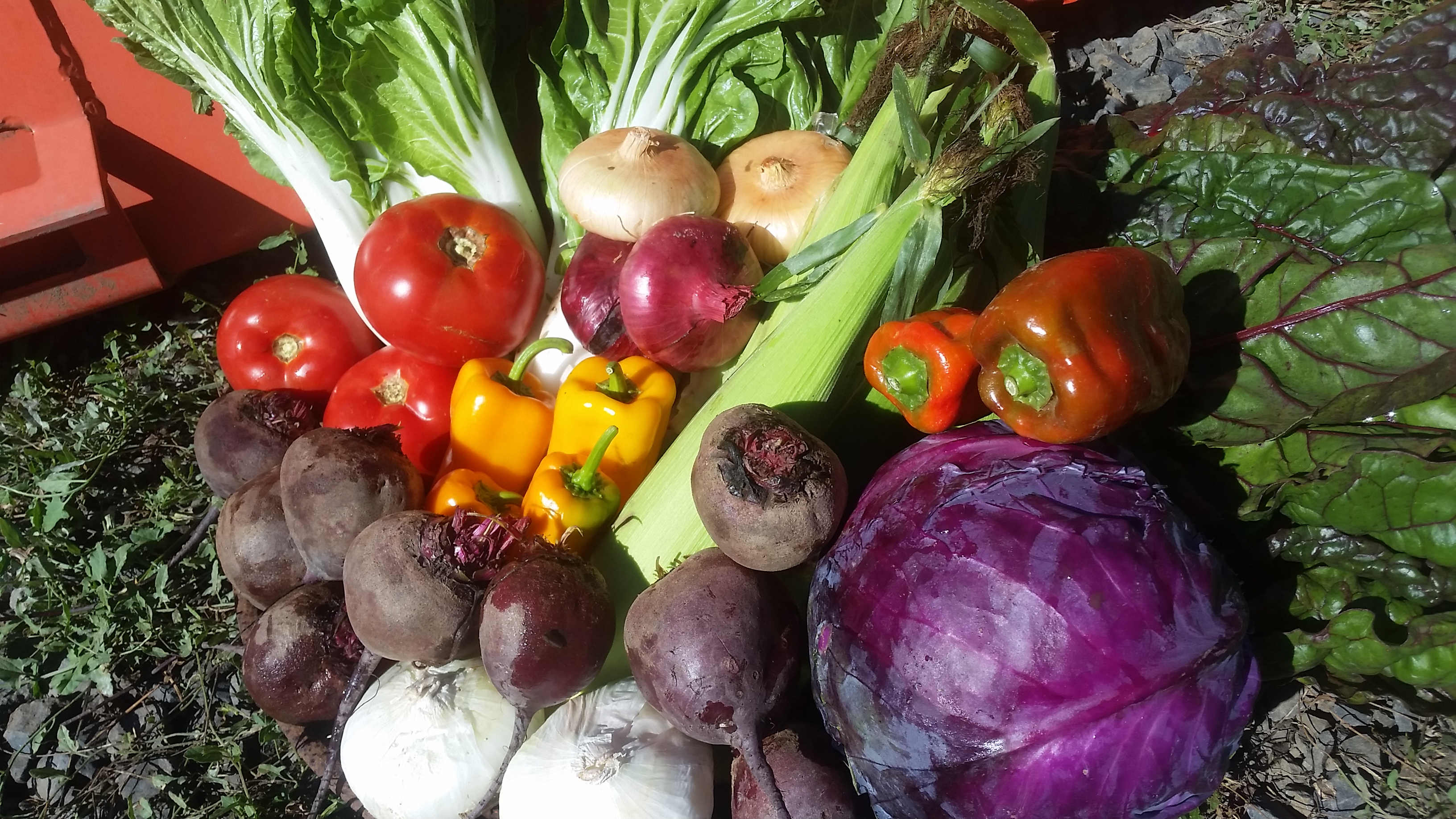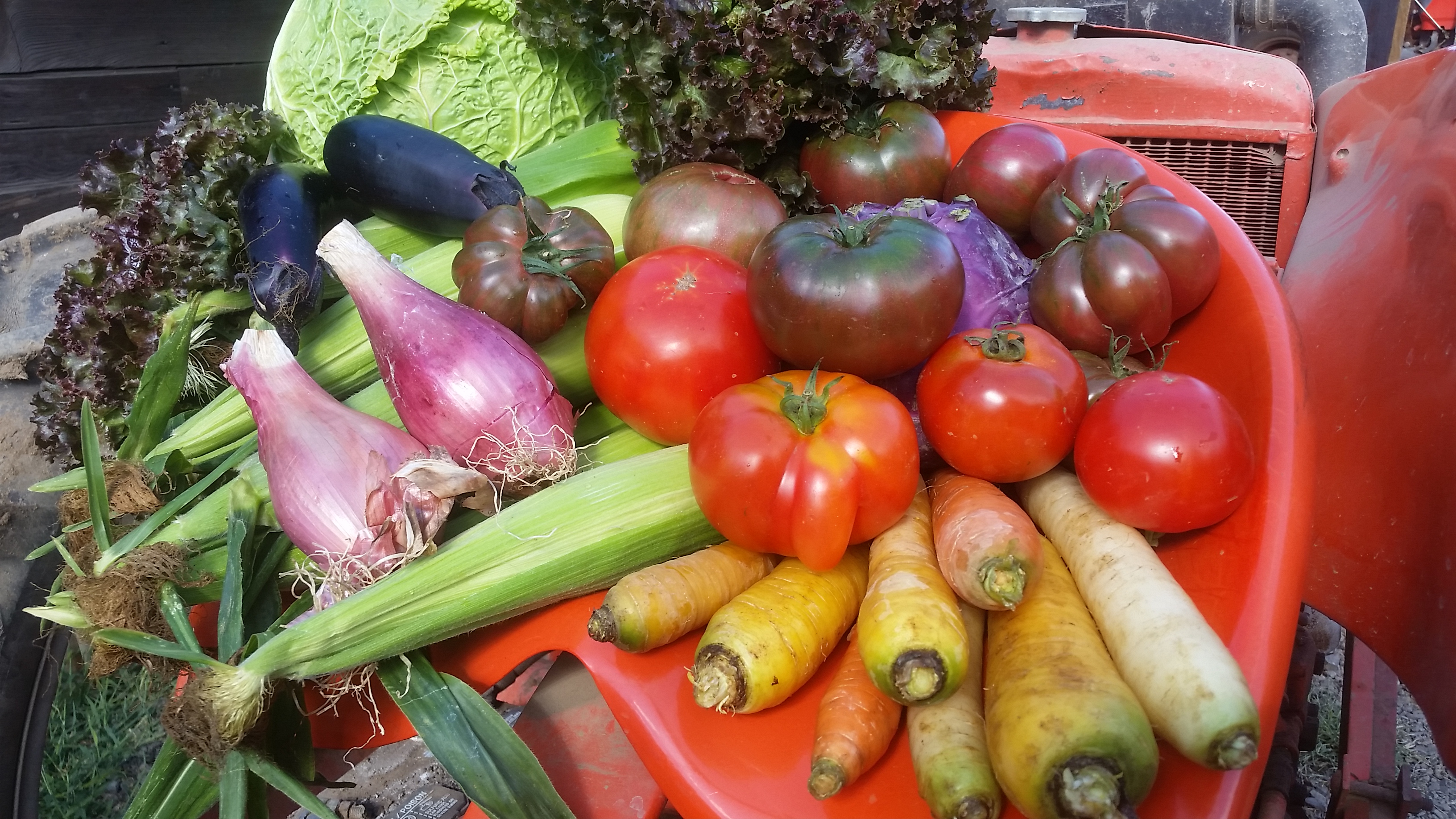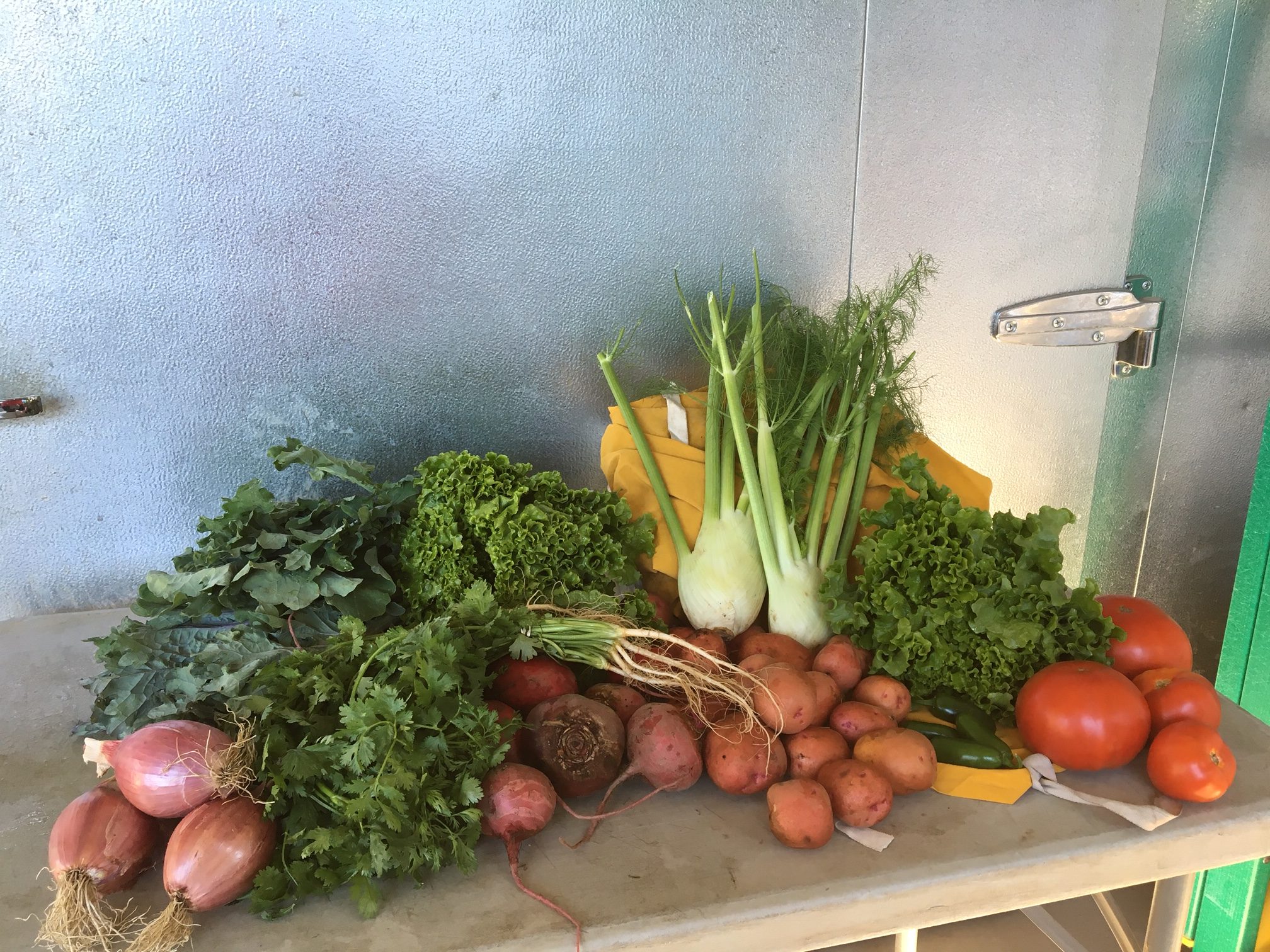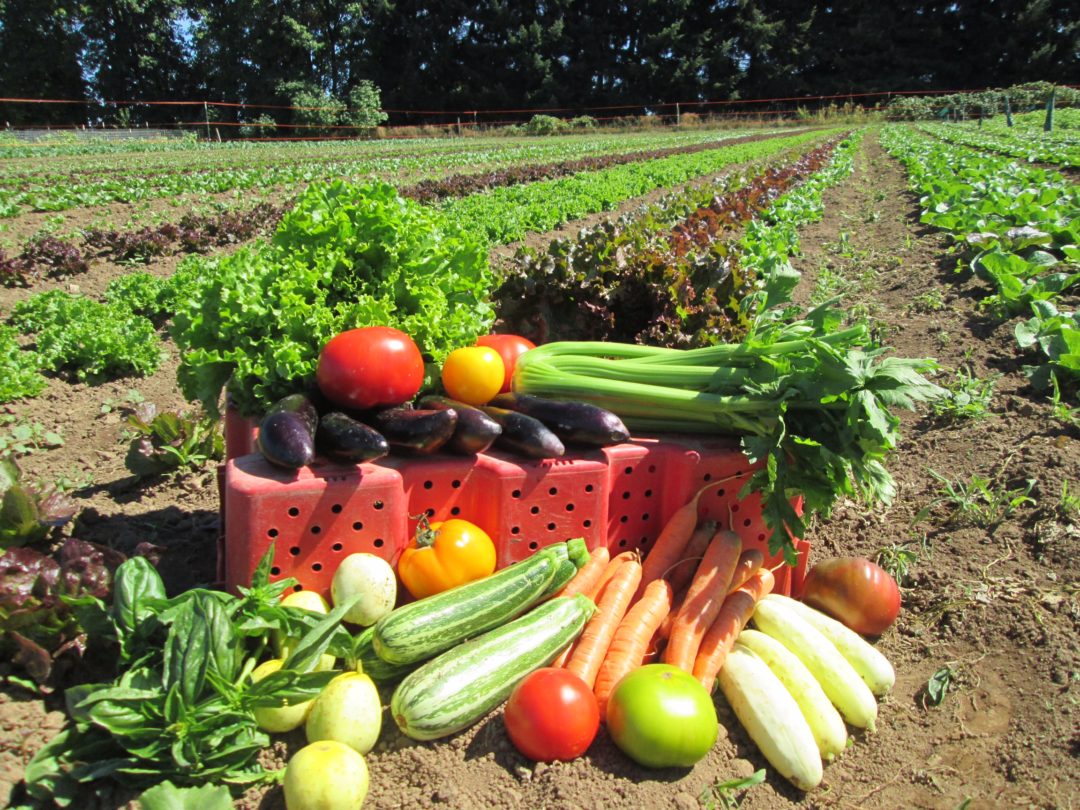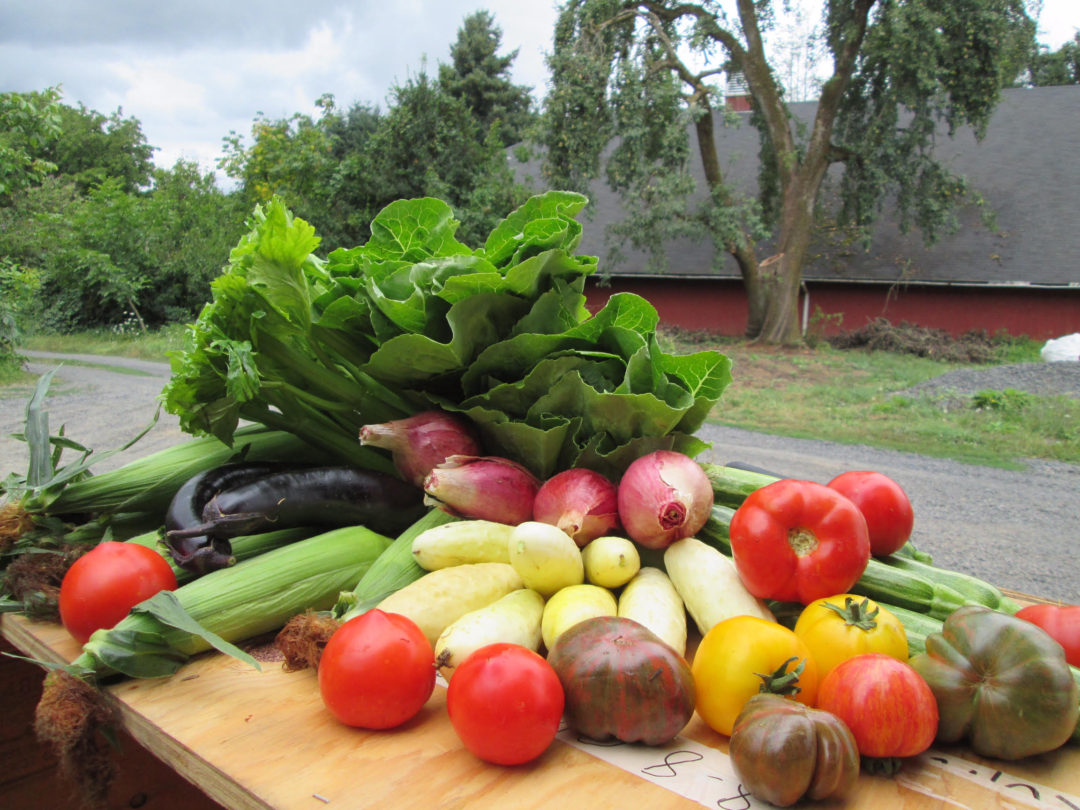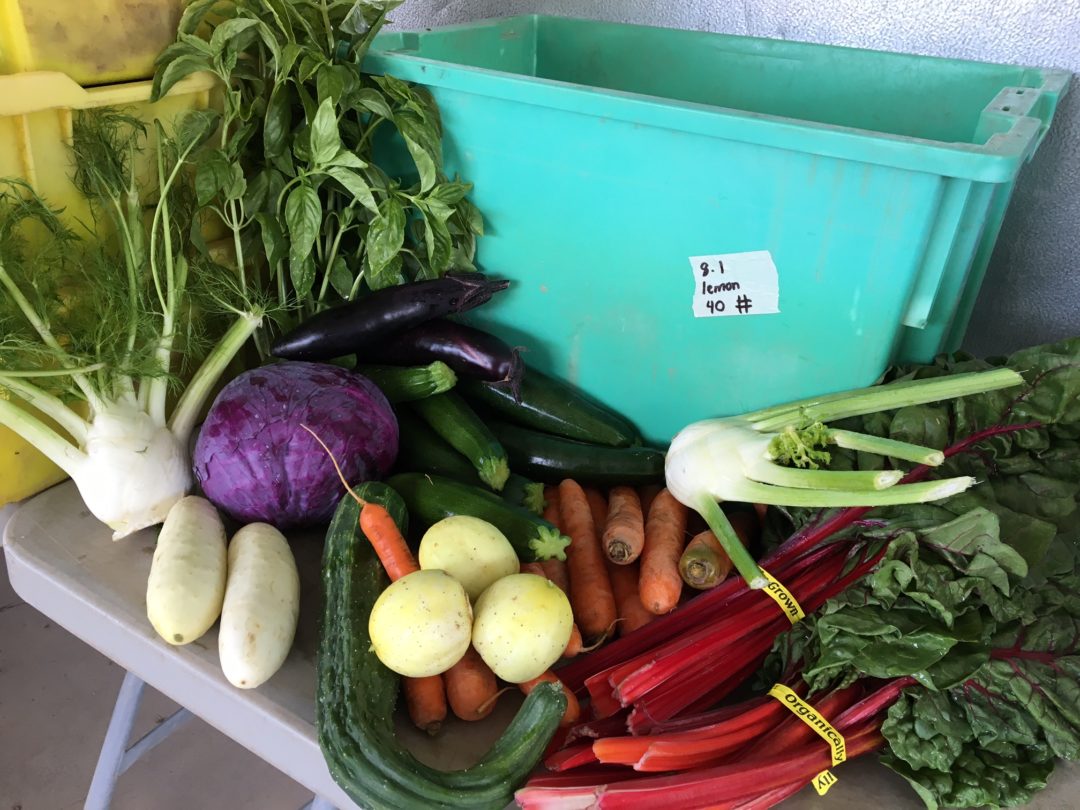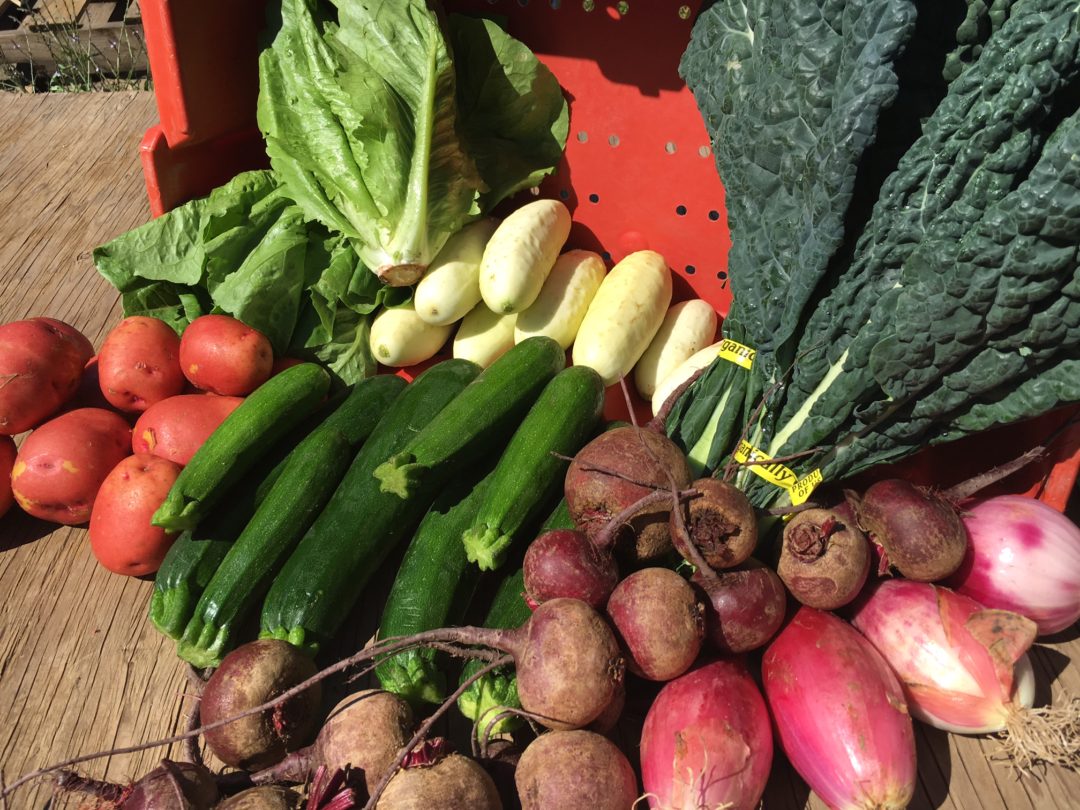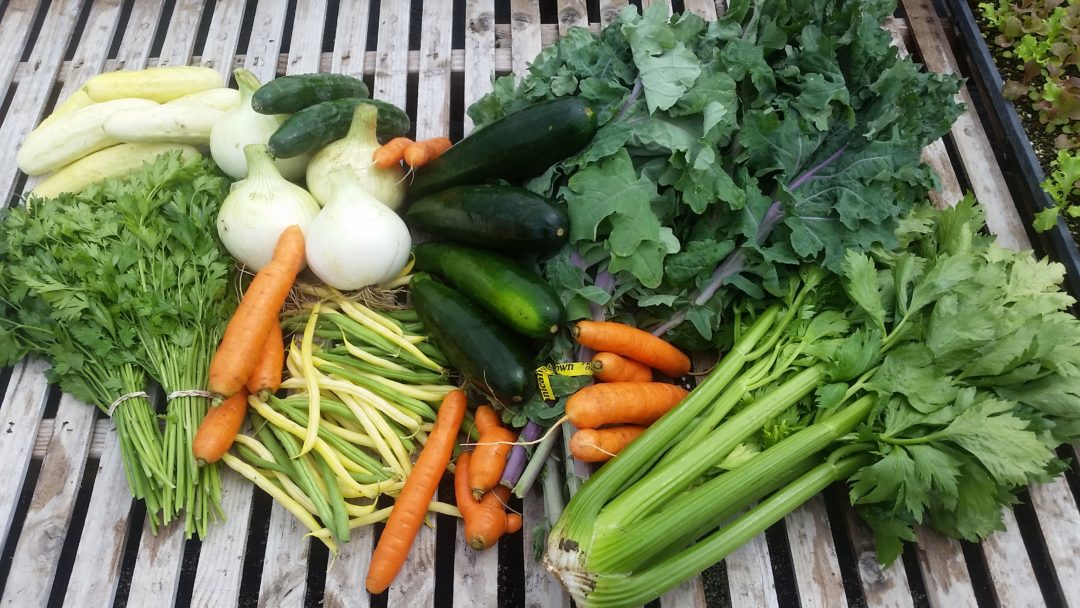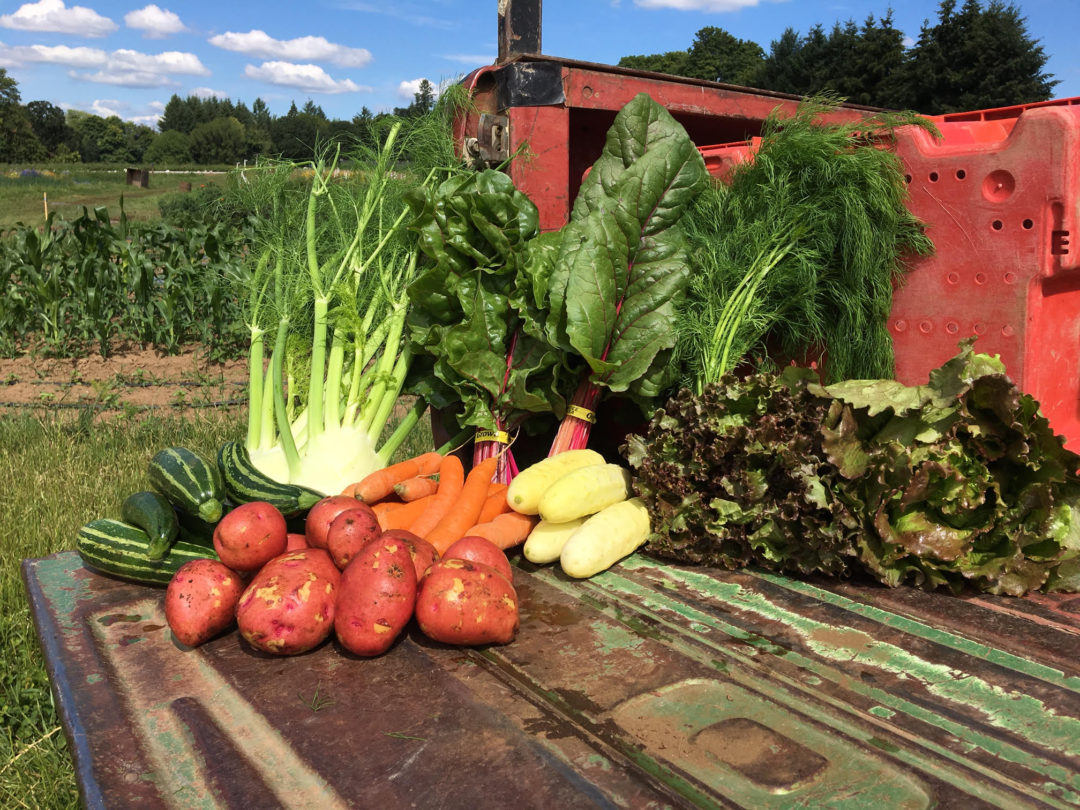In Your Share This Week
- Beets, red
- Cabbage, red
- Chard
- Corn
- Joi Choi
- Onions
- Peppers, sweet
- Tomatoes
Crop Notes
Beets: Do you ever have that thing happen where you find something like a pair of boots that fit just right, or that perfect shade of lipstick…only to find that its being discontinued, or the places you shop are no longer going to carry it? Well, that same annoyance happens to farmers with vegetable varieties. Our red beet variety that has been our main workhorse for years is essentially being discontinued. We’ve learned in the past (with sweet peppers) that although this can be a big disappointment, it can also spur new discoveries and innovations. We were sad to learn that a sweet pepper we grew was going away, so we did a massive variety trial to pick our next pepper varieties- and wouldn’t you know it, the shining all-stars of the trial came from breeders right here in the Willamette Valley! We love the Gatherer’s Gold and Jolene sweet peppers even more then what we were originally growing- and that’s what you’ll find in the share all this season. We are doing the same thing with our red beets this Fall- we have a handful of promising varieties that we are testing out. We will be looking at germination rates, uniformity of growth and maturation, days to maturity, disease resistance, vigor, leaf quality and bunching ability, storage ability, root size, color, texture, and of course…taste! This is the very first contestant from our trials and we really like the nice shape, low cull rate, and smooth skin.
Corn: Just another reminder that we are firmly into the unavoidable Organic late summer corn appearance of corn borers (the green caterpillar looking pals that are likely lurking in the tips of your corn ears). If the proposition of peeling back the silks to reveal a caterpillar and mealy kernels that have been snacked on sounds unappealing, you can always take a firm, swift swing at the tip of the corn ear with a sturdy chef’s knife or a cleaver and just cut 1-2 inches off of the tip before you shuck the ear. Be safe, and have fun!
Onions, Cippolini: We grow a fun little assortment of red, gold, and white Cippolinis that we’re happy to get to share with you this week. Cippolini means ‘little onion’ in Italian, although we have to say that no matter what we try, we keep growing very large ones. The ones in your share this week are a little larger that the dainty boutique-sized treats that you may have seen in specialty markets before. We think its just more Cippolini to love! These are renowned for their sweetness and ability to caramelize incredibly well- so that’s what we would recommend trying. The skins are papery thin, and on some onions may have sloughed off. We hope you like these!
Peppers, sweet: Just a side note…these thick-walled, smooth, and meaty peppers are GREAT for roasting and freezing. Char the skins until they are all blistered and blackened (either over a fire, on the BBQ, or under a broiler) and then toss them into a paper bag and roll the top closed. This will slightly steam the skins and they will slide right off once they are cool enough to handle. Trim the tops off and pull the seeds out, and you’ve got amazing roasted red peppers all winter long!
Around the Farm
This field was fallow for 2016. That means we did not plant any cash crops in this acre, only cover crops. This was part of an effort to help rejuvenate this field by incorporating the accumulated biomass that the cover crops provided and increasing the amount of organic matter in the soil. We had also been having weed problems in this field, which the cover crops help to smother and reduce going into the future.
The corn in the background is where we picked your corn this week. In front of it we have red beets (also in the share this week), gold beets, and carrots. This field is looking really promising as we head in to Fall and we are expecting pretty good yields that will provide for the Winter CSA as well as Winter Farmers Market and Restaurant sales. You might even find some of our red beets in New Seasons this coming Fall and Winter.
From left to right we have Lacinato kale, collards, leeks, and carrots underneath the row cover. The row cover helps to keep rust fly out of the carrots, and the the leeks will be large enough to start digging soon!

